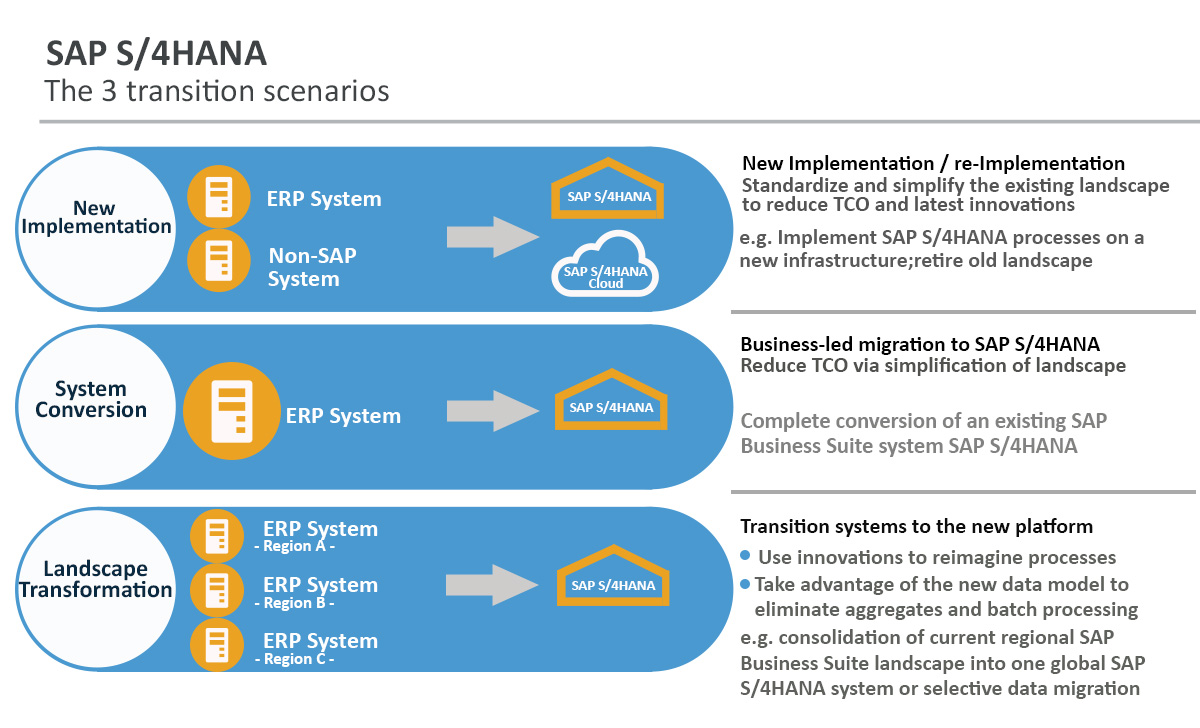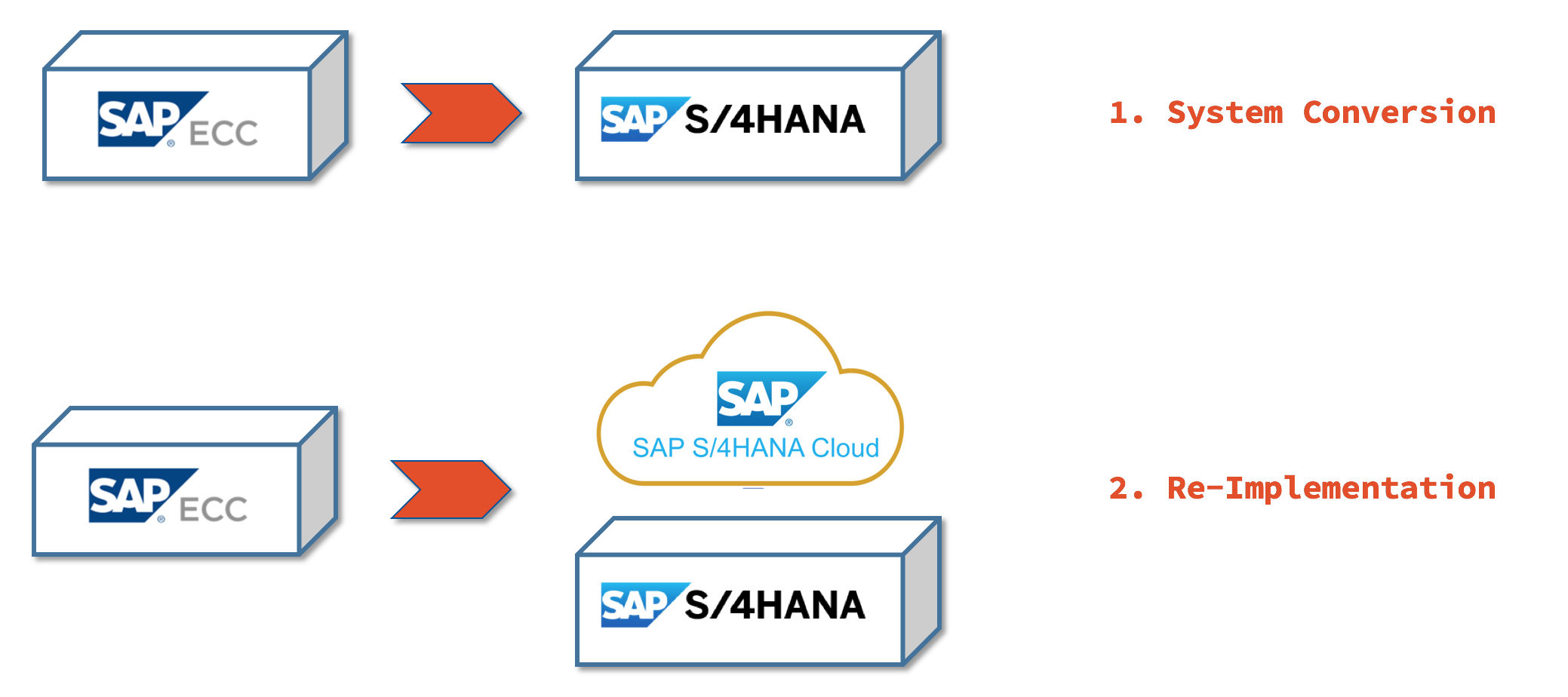Picture this: your business is steadily growing, pushing the limits of your current SAP ECC system. You crave real-time insights, streamlined processes, and a future-proofed technology landscape. But how do you bridge the gap between your legacy system and the cutting-edge power of S/4HANA? The answer lies in a carefully orchestrated migration journey, and this guide will equip you with the knowledge to make it a success.

Image: www.zarantech.com
The transition from SAP ECC to S/4HANA is not just a technical upgrade, it’s a strategic shift that can unlock vast potential for your organization. This guide will delve into the intricacies of this transformation, providing a comprehensive step-by-step approach, enhanced with a free downloadable PDF to guide you through each stage.
Understanding the Need for Migration:
Before diving into the steps, let’s acknowledge the reasons why migration is often a necessity. As your business evolves, its demands on your systems grow. SAP ECC, while a stalwart, may struggle to keep up with the pace of modern business, leaving you with:
- Limited Real-Time Insights: Decision-making can be hampered by delayed data access and reporting, hindering agility and responsiveness.
- Complex and Inflexible Processes: Rigid processes make it difficult to adapt to changing market conditions, hindering innovation and growth.
- Rising Maintenance Costs: As ECC reaches its end-of-life, maintenance expenses increase, impacting profitability and budget allocation.
S/4HANA offers a transformative solution, delivering:
- Real-Time Data and Analytics: Gain immediate access to critical data, empowering informed decisions and proactive adjustments.
- Simplified Processes: Streamlined workflows promote efficiency, reducing manual tasks and minimizing operational errors.
- Enhanced Agility: Adopt new technology, adapt to evolving regulations, and stay ahead of the competition.
The Blueprint for a Successful Migration: Your Step-by-Step Guide
The migration journey is best undertaken with a well-defined plan, ensuring a smooth and effective transition. Here’s a detailed breakdown of the key stages:
1. Business & Technical Assessment (The Foundation):
- Define Scope: Identify the specific modules and processes to migrate, tailoring the project to your business needs.
- Data Analysis: Understand your data landscape, including its volume, integrity, and potential dependencies.
- Process Mapping & Optimization: Identify areas for streamlining and simplification, leveraging S/4HANA’s capabilities.
- Technology Assessment: Evaluate hardware, software, and infrastructure needs to support S/4HANA.
2. Preparation (Laying the Track):
- System Landscape Setup: Establish the necessary systems for development, testing, and production environments.
- Data Cleansing and Migration: Prepare data for the migration process, ensuring accuracy and consistency.
- Customization Analysis: Review and adjust existing customizations for compatibility with S/4HANA.
- Training & Communication: Initiate training programs for users to familiarize them with the new system.
3. Migration (The Engine of Change):
- Software Installation and Configuration: Deploy S/4HANA software and configure it according to your business requirements.
- Data Migration: Transfer prepared data from ECC to S/4HANA using appropriate tools and techniques.
- Testing and Validation: Thoroughly test the new system to ensure data integrity, functional accuracy, and performance.
- Go-Live & Post-Go-Live Support: Coordinate the cutover and provide ongoing post-implementation support.
Navigating the Migration: Key Considerations
Customization & Compatibility: S/4HANA promotes standard processes, so review and adjust existing customizations for compatibility.
Data Migration Strategies: Select the appropriate data migration approach based on your data volume and complexity.
Change Management: Involve users throughout the journey, providing clear communication and training to promote acceptance.
Risk Assessment and Mitigation: Identify potential risks and develop mitigation strategies to ensure a smooth transition.

Image: analiticaderetail.com
Unlocking Your S/4HANA Potential: Benefits and Advantages
Embarking on the S/4HANA migration is a strategic investment that pays dividends. These benefits are a testament to the potential of this transformation:
- Enhanced Efficiency and Productivity: Streamlined processes and real-time data empower staff to work smarter and achieve greater productivity.
- Improved Decision-Making: Access to comprehensive, real-time insights creates a foundation for informed decisions leading to sustainable growth.
- Enhanced Reporting and Analytics: S/4HANA’s powerful analytics tools deliver actionable insights, allowing you to identify opportunities and address challenges proactively.
- Reduced IT Costs: Simplified operations, improved efficiency, and lower maintenance costs contribute to significant cost savings.
- Improved Compliance and Security: S/4HANA is built with robust security features and compliance capabilities, safeguarding your data and operations.
Sap Ecc To S4hana Migration Step By Step Pdf
Empowering You With Knowledge:
The transition to S/4HANA is a significant undertaking, but it’s a journey fueled by knowledge. Download our free PDF guide, “SAP ECC to S/4HANA Migration: A Step-by-Step Guide.” This comprehensive resource will serve as your roadmap, providing valuable insights and actionable steps to ensure a successful migration.
Embark on this transformative journey with confidence. The knowledge and tools you gain will propel your business forward, unlocking new levels of efficiency, profitability, and innovation.






